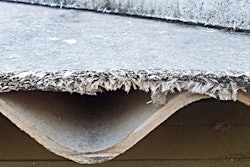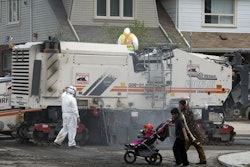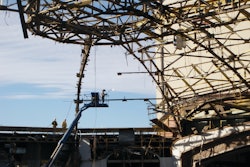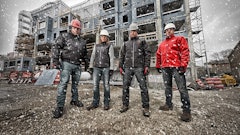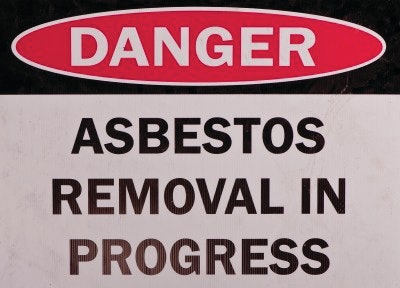
Information provided by Faith Franz, a writer for the Mesothelioma Center.
How often as a construction worker do you think about asbestos exposure and protecting workers from asbestos-related diseases? While not all segments of the construction industry are affected equally by asbestos, Faith Franz from the Mesothelioma Center says the profession as a whole is at a higher-than-average risk for developing these illnesses.
Workers can be exposed to asbestos when building, repairing or demolishing structures. This is especially true for older buildings that were built prior to the 1980s-era asbestos regulations.
While the EPA has banned several asbestos-containing construction products, some such as shingles, pipeline wrap, millboard and roof coatings are not banned by the EPA. And in 2018, the EPA announced a new rule that would allow new products containing asbestos to be created on a case-by-case basis.
When construction workers install, replace or demolish asbestos-containing products they risk inhaling the microscopic fibers if they become airborne. Fibers can easily circulate in the air until they are inhaled, especially in indoor and unventilated areas.
Workers should also consider the construction equipment they use. Franz says it is possible that asbestos parts were used in the production of heavy construction equipment, and operating or repairing these machines may release asbestos into the air.
Asbestos-related diseases
Asbestos-related diseases that are commonly diagnosed in construction workers include mesothelioma (a cancer of the lining of the lungs, stomach or heart), lung cancer, asbestosis (a scarring of the lungs) and pleural plaques.
The symptoms of these diseases are primarily respiratory in nature. Excessive coughing, difficulty breathing and chest pain may indicate an asbestos-related health issue, and construction workers should pay special attention to their health for the development of any of these symptoms.
However, they should keep in mind that asbestos-related illnesses typically take 20 to 50 years to develop. In rare cases, patients have experienced symptoms only years after their exposure to asbestos, but asbestos-exposed workers should be more concerned about their long-term health and consider regular asbestos-related disease screenings in their future.
Protect your health
Construction workers who handle interior, commercial or industrial projects where they may be exposed to these materials can protect themselves by utilizing proper asbestos abatement methods. Here are some other tips for protecting yourself and your employees from asbestos exposure:
- Wearing specified protective gear
- Wetting down asbestos-containing materials before removing them
- Cleaning the area with HEPA filter-equipped vacuums
- Take an asbestos certification class to learn more about the required precautions to use before, during and after any project that involves asbestos-containing materials
Unfortunately, some workers inhale asbestos without knowing it. Although there is no appropriate medical response to this exposure, workers can be mindful of their now-elevated risk for asbestos-related diseases and monitor for symptoms as noted above.
Faith Franz is a writer for the Mesothelioma Center. She combines her interests in whole-body health and medical research to educate the mesothelioma community about the newest developments in cancer care.






